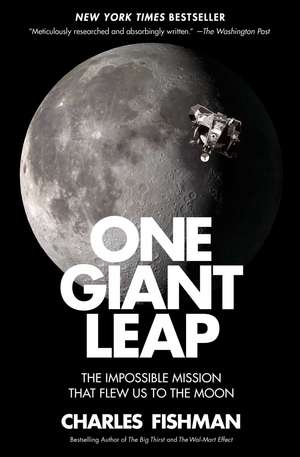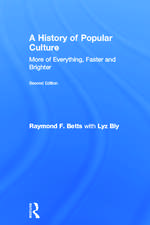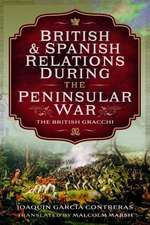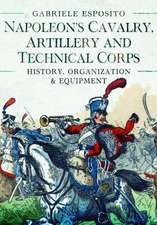One Giant Leap: The Impossible Mission That Flew Us to the Moon
Autor Charles Fishmanen Limba Engleză Paperback – 28 oct 2020
President John F. Kennedy astonished the world on May 25, 1961, when he announced to Congress that the United States should land a man on the Moon by 1970. No group was more surprised than the scientists and engineers at NASA, who suddenly had less than a decade to invent space travel.
When Kennedy announced that goal, no one knew how to navigate to the Moon. No one knew how to build a rocket big enough to reach the Moon, or how to build a computer small enough (and powerful enough) to fly a spaceship there. No one knew what the surface of the Moon was like, or what astronauts could eat as they flew there. On the day of Kennedy’s historic speech, America had a total of fifteen minutes of spaceflight experience—with just five of those minutes outside the atmosphere. Russian dogs had more time in space than US astronauts. Over the next decade, more than 400,000 scientists, engineers, and factory workers would send twenty-four astronauts to the Moon. Each hour of space flight would require one million hours of work back on Earth to get America to the Moon on July 20, 1969.
“A veteran space reporter with a vibrant touch—nearly every sentence has a fact, an insight, a colorful quote or part of a piquant anecdote” (The Wall Street Journal) and in One Giant Leap, Fishman has written the sweeping, definitive behind-the-scenes account of the furious race to complete one of mankind’s greatest achievements. It’s a story filled with surprises—from the item the astronauts almost forgot to take with them (the American flag), to the extraordinary impact Apollo would have back on Earth, and on the way we live today. From the research labs of MIT, where the eccentric and legendary pioneer Charles Draper created the tools to fly the Apollo spaceships, to the factories where dozens of women sewed spacesuits, parachutes, and even computer hardware by hand, Fishman captures the exceptional feats of these ordinary Americans. “It’s been 50 years since Neil Armstrong took that one small step. Fishman explains in dazzling form just how unbelievable it actually was” (Newsweek).
Preț: 104.97 lei
Nou
Puncte Express: 157
Preț estimativ în valută:
20.09€ • 21.03$ • 16.62£
20.09€ • 21.03$ • 16.62£
Carte disponibilă
Livrare economică 15-29 martie
Preluare comenzi: 021 569.72.76
Specificații
ISBN-13: 9781501106309
ISBN-10: 1501106309
Pagini: 512
Ilustrații: 2x8-page b&w inserts
Dimensiuni: 140 x 213 x 30 mm
Greutate: 0.43 kg
Editura: Simon&Schuster
Colecția Simon & Schuster
ISBN-10: 1501106309
Pagini: 512
Ilustrații: 2x8-page b&w inserts
Dimensiuni: 140 x 213 x 30 mm
Greutate: 0.43 kg
Editura: Simon&Schuster
Colecția Simon & Schuster
Notă biografică
Charles Fishman is the acclaimed author of the New York Times bestseller One Giant Leap, A Curious Mind (with Brian Grazer), The Wal-Mart Effect, and The Big Thirst. He is a three-time winner of the Gerald Loeb Award, the most prestigious prize in business journalism.
Extras
One Giant Leap
Boy this thing sure flies nice.
Pete Conrad, Apollo 12 commander
at the controls of lunar module Intrepid, preparing to fly to a pinpoint landing on the Moon1
The Moon has a smell.
It has no air, but it has a smell.
Each pair of Apollo astronauts to land on the Moon tramped lots of Moondust back into the lunar module—it was deep gray, fine-grained and extremely clingy—and when they unsnapped their helmets, they immediately noticed the smell.
“We were aware of a new scent in the air of the cabin,” said Neil Armstrong, the first man to set foot on the Moon, “that clearly came from all the lunar material that had accumulated on and in our clothes.” To Armstrong, it was “the scent of wet ashes.” To his Apollo 11 crewmate Buzz Aldrin, it was “the smell in the air after a firecracker has gone off.”
All the astronauts who walked on the Moon noticed it, and many of them commented on it to Mission Control. Harrison Schmitt, the geologist who flew on Apollo 17, the last lunar landing, said after his second Moon walk, “Smells like someone’s been firing a carbine in here.” Almost unaccountably, no one had warned lunar module pilot Jim Irwin about the dust. When he took off his helmet inside the cramped lunar module cabin, he said, “There’s a funny smell in here.” His Apollo 15 crewmate Dave Scott said: “Yeah, I think that’s the lunar dirt smell. Never smelled lunar dirt before, but we got most of it right here with us.”2
Moondust was a mystery that the National Aeronautics and Space Administration had, in fact, thought about. Cornell University astrophysicist Thomas Gold warned NASA that the dust had been isolated from oxygen for so long that it might well be highly chemically reactive. If too much dust was carried inside the lunar module’s cabin, the moment the astronauts repressurized it with air and the dust came into contact with oxygen, it might start burning, or even cause an explosion. (Gold, who correctly predicted early on that the Moon’s surface would be covered with powdery dust, also had warned NASA that the dust might be so deep that the lunar module and the astronauts themselves could sink irretrievably into it.)3
Among the thousands of things they were keeping in mind while flying to the Moon, Armstrong and Aldrin had been briefed about the very small possibility that the lunar dust could ignite. It was, said Aldrin, “the worry of a few. A late-July fireworks display on the Moon was not something advisable.”
Armstrong and Aldrin did their own test. They took a small sample of lunar dirt that Armstrong had scooped into a lunar sample bag and put in a pocket of his spacesuit right as he stepped onto the Moon—a contingency sample in case, for some reason, the astronauts had to leave suddenly without collecting rocks. Back inside the lunar module the astronauts opened the bag and spread the lunar soil out on top of the ascent engine. As they repressurized the cabin, they watched to see if the dirt started to smolder. “If it did, we’d stop pressurization, open the hatch and toss it out,” explained Aldrin. “But nothing happened.”4
The Moondust turned out to be so clingy and so irritating that on the one night that Armstrong and Aldrin spent in the lunar module on the surface of the Moon, they slept in their helmets and gloves, in part to avoid breathing the dust floating around inside the cabin.5
NASA had anticipated the dust, and the danger. The smell was a surprise.
By the time the Moon rocks and dust got back to Earth—a total of 842 pounds from six lunar landings—the smell was gone. Scientists think the rocks and dirt were chemically reactive, as Gold theorized, but that the air and moisture the rocks were exposed to in their sample boxes on the way to Earth “pacified” them, releasing whatever smell there was to be released.
Scientists who have studied the rocks and dirt and handled them and sniffed them say they have no odor at all. And no one has quite figured out what caused it, or why it was so like spent gunpowder, which is chemically nothing like Moon rock. “Very distinctive smell,” said Apollo 12 commander Pete Conrad. “I’ll never forget. And I’ve never smelled it again since then.”6
In 1999, as the century was ending, the Pulitzer Prize–winning historian Arthur Schlesinger Jr. was among a group asked what the most significant human achievement of the 20th century was. In ranking the events, Schlesinger said, “I put DNA and penicillin and the computer and the microchip in the first 10 because they’ve transformed civilization.” But in 500 years, if the United States of America still exists, most of its history will have faded to invisibility. “Pearl Harbor will be as remote as the War of the Roses,” said Schlesinger. “The one thing for which this century will be remembered 500 years from now was: This was the century when we began the exploration of space.” He picked the first Moon landing, Apollo 11, as the most significant event of the 20th century.7
The leap from one small planet to its even smaller nearby Moon may well look modest when space travel has transformed the solar system—a trip no more ambitious than the way we think of a flight from Dallas to New York City today. But it is hard to argue with Schlesinger’s larger observation: in the chronicle of humanity, the first missions by people from Earth through space to another planetary body are unlikely ever to be lost to history, to memory, or to storytelling.
The leap to the Moon in the 1960s was an astonishing accomplishment. But why? What made it astonishing? We’ve lost track not just of the details; we’ve lost track of the plot itself. What exactly was the hard part?
The answer is simple: when President John Kennedy declared in 1961 that the United States would go to the Moon, he was committing the nation to do something we couldn’t do. We didn’t have the tools, the equipment—we didn’t have the rockets or the launchpads, the spacesuits or the computers or the zero-gravity food—to go to the Moon. And it isn’t just that we didn’t have what we would need; we didn’t even know what we would need. We didn’t have a list; no one in the world had a list. Indeed, our unpreparedness for the task goes a level deeper: we didn’t even know how to fly to the Moon. We didn’t know what course to fly to get there from here. And, as the small example of lunar dirt shows, we didn’t know what we would find when we got there. Physicians worried that people wouldn’t be able to think in zero gravity. Mathematicians worried that we wouldn’t be able to work out the math to rendezvous two spacecraft in orbit—to bring them together in space, docking them in flight both perfectly and safely. And that serious planetary scientist from Cornell worried that the lunar module would land on the Moon and sink up to its landing struts in powdery lunar dirt, trapping the space travelers.
Every one of those challenges was tackled and mastered between May 1961 and July 1969. The astronauts, the nation, flew to the Moon because hundreds of thousands of scientists and engineers, managers and factory workers unraveled a series of puzzles, a series of mysteries, often without knowing whether the puzzle had a good solution.
In retrospect, the results are both bold and bemusing. The Apollo spacecraft ended up with what was, for its time, the smallest, fastest, and most nimble and most reliable computer in a single package anywhere in the world. That computer navigated through space and helped the astronauts operate the ship. But the astronauts also traveled to the Moon with paper star charts so they could use a sextant to take star sightings—like the explorers of the 1700s from the deck of a ship—and cross-check their computer’s navigation. The guts of the computer were stitched together by women using wire instead of thread. In fact, an arresting amount of work across Apollo was done by hand: the heat shield was applied to the spaceship by hand with a fancy caulking gun; the parachutes were sewn by hand, and also folded by hand. The only three staff members in the country who were trained and licensed to fold and pack the Apollo parachutes were considered so indispensable that NASA officials forbade them to ever ride in the same car, to avoid their all being injured in a single accident.8
The astronauts went to the Moon, and their skill and courage is undeniable, and also well-chronicled. But the astronauts aren’t the ones who made it possible to go to the Moon.
The race to the Moon in the 1960s was also a real race, motivated by the Cold War and sustained by politics. It’s been only 50 years—not 500—and yet that part of the story too has faded.
One of the ribbons of magic running through the Apollo missions is that an all-out effort born from bitter rivalry ended up uniting the world in awe and joy and appreciation in a way it had never been united before and has never been united since.
The mission to land astronauts on the Moon is all the more compelling because it was part of a tumultuous decade of transformation, tragedy, and division in the United States. Civil rights protesters, led by the Reverend Ralph Abernathy, marched on Cape Kennedy on the eve of the launch of Apollo 11.
In that way, the story of Apollo holds echoes and lessons for our own era. A nation determined to accomplish something big and worthwhile can do it, even when the goal seems beyond reach, even when the nation is divided over other things. Kennedy said of the Apollo mission that it was hard—that we were going to the Moon precisely because doing so was hard—and that it would “serve to organize and measure the best of our energies and skills.” And to measure the breadth of our spirit as well.9
Putting spaceships and astronauts on the Moon, and bringing them back again, required surmounting 10,000 challenges. That extraordinary accomplishment was done by ordinary people, each, as Neil Armstrong said, taking one small step. Theirs is a story with unexpected surprises at every turn, like the moment when Armstrong, safely back inside the lunar module, took off his space helmet, took a breath, and discovered that the Moon has a smell.
PREFACE
The Mystery of Moondust
Boy this thing sure flies nice.
Pete Conrad, Apollo 12 commander
at the controls of lunar module Intrepid, preparing to fly to a pinpoint landing on the Moon1
The Moon has a smell.
It has no air, but it has a smell.
Each pair of Apollo astronauts to land on the Moon tramped lots of Moondust back into the lunar module—it was deep gray, fine-grained and extremely clingy—and when they unsnapped their helmets, they immediately noticed the smell.
“We were aware of a new scent in the air of the cabin,” said Neil Armstrong, the first man to set foot on the Moon, “that clearly came from all the lunar material that had accumulated on and in our clothes.” To Armstrong, it was “the scent of wet ashes.” To his Apollo 11 crewmate Buzz Aldrin, it was “the smell in the air after a firecracker has gone off.”
All the astronauts who walked on the Moon noticed it, and many of them commented on it to Mission Control. Harrison Schmitt, the geologist who flew on Apollo 17, the last lunar landing, said after his second Moon walk, “Smells like someone’s been firing a carbine in here.” Almost unaccountably, no one had warned lunar module pilot Jim Irwin about the dust. When he took off his helmet inside the cramped lunar module cabin, he said, “There’s a funny smell in here.” His Apollo 15 crewmate Dave Scott said: “Yeah, I think that’s the lunar dirt smell. Never smelled lunar dirt before, but we got most of it right here with us.”2
Moondust was a mystery that the National Aeronautics and Space Administration had, in fact, thought about. Cornell University astrophysicist Thomas Gold warned NASA that the dust had been isolated from oxygen for so long that it might well be highly chemically reactive. If too much dust was carried inside the lunar module’s cabin, the moment the astronauts repressurized it with air and the dust came into contact with oxygen, it might start burning, or even cause an explosion. (Gold, who correctly predicted early on that the Moon’s surface would be covered with powdery dust, also had warned NASA that the dust might be so deep that the lunar module and the astronauts themselves could sink irretrievably into it.)3
Among the thousands of things they were keeping in mind while flying to the Moon, Armstrong and Aldrin had been briefed about the very small possibility that the lunar dust could ignite. It was, said Aldrin, “the worry of a few. A late-July fireworks display on the Moon was not something advisable.”
Armstrong and Aldrin did their own test. They took a small sample of lunar dirt that Armstrong had scooped into a lunar sample bag and put in a pocket of his spacesuit right as he stepped onto the Moon—a contingency sample in case, for some reason, the astronauts had to leave suddenly without collecting rocks. Back inside the lunar module the astronauts opened the bag and spread the lunar soil out on top of the ascent engine. As they repressurized the cabin, they watched to see if the dirt started to smolder. “If it did, we’d stop pressurization, open the hatch and toss it out,” explained Aldrin. “But nothing happened.”4
The Moondust turned out to be so clingy and so irritating that on the one night that Armstrong and Aldrin spent in the lunar module on the surface of the Moon, they slept in their helmets and gloves, in part to avoid breathing the dust floating around inside the cabin.5
NASA had anticipated the dust, and the danger. The smell was a surprise.
By the time the Moon rocks and dust got back to Earth—a total of 842 pounds from six lunar landings—the smell was gone. Scientists think the rocks and dirt were chemically reactive, as Gold theorized, but that the air and moisture the rocks were exposed to in their sample boxes on the way to Earth “pacified” them, releasing whatever smell there was to be released.
Scientists who have studied the rocks and dirt and handled them and sniffed them say they have no odor at all. And no one has quite figured out what caused it, or why it was so like spent gunpowder, which is chemically nothing like Moon rock. “Very distinctive smell,” said Apollo 12 commander Pete Conrad. “I’ll never forget. And I’ve never smelled it again since then.”6
In 1999, as the century was ending, the Pulitzer Prize–winning historian Arthur Schlesinger Jr. was among a group asked what the most significant human achievement of the 20th century was. In ranking the events, Schlesinger said, “I put DNA and penicillin and the computer and the microchip in the first 10 because they’ve transformed civilization.” But in 500 years, if the United States of America still exists, most of its history will have faded to invisibility. “Pearl Harbor will be as remote as the War of the Roses,” said Schlesinger. “The one thing for which this century will be remembered 500 years from now was: This was the century when we began the exploration of space.” He picked the first Moon landing, Apollo 11, as the most significant event of the 20th century.7
The leap from one small planet to its even smaller nearby Moon may well look modest when space travel has transformed the solar system—a trip no more ambitious than the way we think of a flight from Dallas to New York City today. But it is hard to argue with Schlesinger’s larger observation: in the chronicle of humanity, the first missions by people from Earth through space to another planetary body are unlikely ever to be lost to history, to memory, or to storytelling.
The leap to the Moon in the 1960s was an astonishing accomplishment. But why? What made it astonishing? We’ve lost track not just of the details; we’ve lost track of the plot itself. What exactly was the hard part?
The answer is simple: when President John Kennedy declared in 1961 that the United States would go to the Moon, he was committing the nation to do something we couldn’t do. We didn’t have the tools, the equipment—we didn’t have the rockets or the launchpads, the spacesuits or the computers or the zero-gravity food—to go to the Moon. And it isn’t just that we didn’t have what we would need; we didn’t even know what we would need. We didn’t have a list; no one in the world had a list. Indeed, our unpreparedness for the task goes a level deeper: we didn’t even know how to fly to the Moon. We didn’t know what course to fly to get there from here. And, as the small example of lunar dirt shows, we didn’t know what we would find when we got there. Physicians worried that people wouldn’t be able to think in zero gravity. Mathematicians worried that we wouldn’t be able to work out the math to rendezvous two spacecraft in orbit—to bring them together in space, docking them in flight both perfectly and safely. And that serious planetary scientist from Cornell worried that the lunar module would land on the Moon and sink up to its landing struts in powdery lunar dirt, trapping the space travelers.
Every one of those challenges was tackled and mastered between May 1961 and July 1969. The astronauts, the nation, flew to the Moon because hundreds of thousands of scientists and engineers, managers and factory workers unraveled a series of puzzles, a series of mysteries, often without knowing whether the puzzle had a good solution.
In retrospect, the results are both bold and bemusing. The Apollo spacecraft ended up with what was, for its time, the smallest, fastest, and most nimble and most reliable computer in a single package anywhere in the world. That computer navigated through space and helped the astronauts operate the ship. But the astronauts also traveled to the Moon with paper star charts so they could use a sextant to take star sightings—like the explorers of the 1700s from the deck of a ship—and cross-check their computer’s navigation. The guts of the computer were stitched together by women using wire instead of thread. In fact, an arresting amount of work across Apollo was done by hand: the heat shield was applied to the spaceship by hand with a fancy caulking gun; the parachutes were sewn by hand, and also folded by hand. The only three staff members in the country who were trained and licensed to fold and pack the Apollo parachutes were considered so indispensable that NASA officials forbade them to ever ride in the same car, to avoid their all being injured in a single accident.8
The astronauts went to the Moon, and their skill and courage is undeniable, and also well-chronicled. But the astronauts aren’t the ones who made it possible to go to the Moon.
The race to the Moon in the 1960s was also a real race, motivated by the Cold War and sustained by politics. It’s been only 50 years—not 500—and yet that part of the story too has faded.
One of the ribbons of magic running through the Apollo missions is that an all-out effort born from bitter rivalry ended up uniting the world in awe and joy and appreciation in a way it had never been united before and has never been united since.
The mission to land astronauts on the Moon is all the more compelling because it was part of a tumultuous decade of transformation, tragedy, and division in the United States. Civil rights protesters, led by the Reverend Ralph Abernathy, marched on Cape Kennedy on the eve of the launch of Apollo 11.
In that way, the story of Apollo holds echoes and lessons for our own era. A nation determined to accomplish something big and worthwhile can do it, even when the goal seems beyond reach, even when the nation is divided over other things. Kennedy said of the Apollo mission that it was hard—that we were going to the Moon precisely because doing so was hard—and that it would “serve to organize and measure the best of our energies and skills.” And to measure the breadth of our spirit as well.9
Putting spaceships and astronauts on the Moon, and bringing them back again, required surmounting 10,000 challenges. That extraordinary accomplishment was done by ordinary people, each, as Neil Armstrong said, taking one small step. Theirs is a story with unexpected surprises at every turn, like the moment when Armstrong, safely back inside the lunar module, took off his space helmet, took a breath, and discovered that the Moon has a smell.
Recenzii
"In his meticulously researched and absorbingly written book, journalist Charles Fishman provides both a celebration of the Apollo 11 mission and a corrective to some of the myths that have crystallized around it." —The Washington Post
"Mr. Fishman is a veteran space reporter with a vibrant touch—nearly every sentence has a fact, an insight, a colorful quote or part of a piquant anecdote. What’s more, he has pondered the meaning of the moon landing and arrived at a surprising and persuasive answer. . . . Mr. Fishman is a connoisseur of fascinating detail, as well." —The Wall Street Journal
"With the upcoming 50th anniversary of the Apollo 11 landing, this compelling read is highly recommended. . . . [Fishman] skillfully tells the remarkable story of the event . . . [and] provides fasicinating details about the mission." —Library Journal, starred review
"A fresh, enthusiastic history of the moon mission . . . Rather than focus on the astronauts, journalist Fishman offers lively profiles of many tireless, imaginative, and innovative scientists, engineers, and technicians who contributed to the Apollo mission." —Kirkus Reviews
"Astronauts take a back seat to politicians, project managers, engineers, and the marvelous machines they created in this engrossing history of the moon landings. . . . Fishman’s knack for explaining science and engineering and his infectious enthusiasm for Apollo’s can-do wizardry make for a fascinating portrait of a technological heroic age." —Publishers Weekly
“A work that will reward readers with new angles on a familiar story.” —Booklist
“The best Apollo anniversary treatment I’ve seen so far. . . In One Giant Leap, Charles Fishman has not only provided a vivid account of the historic Apollo 11 mission. He has also thought hard and written cogently about the character of Project Apollo, and especially about both John Kennedy’s continued commitment to a Moon landing ‘before this decade is out’ and the broad impacts of Apollo on American society. While I don’t agree totally with his conclusions, it is refreshing to see him go beyond the usual platitudes to careful analysis and reasoned judgments. This is a book worth careful reading.” —John M. Logsdon, author of John F. Kennedy and the Race to the Moon
"This is the most comprehensive and detailed account of the Apollo 11 mission. Fishman investigates the myriad scientists and engineers behind the project, details the challenges of the untried computer systems and especially documents the dramatic race in time to meet President Kennedy’s mandate." —Columbus Dispatch
"Expansive and engaging." —Financial Times
"For a one-stop overview of how Apollo unfolded, One Giant Leap by journalist Charles Fishman wins." —Nature
"In Fishman’s One Giant Leap, the veteran space journalist ably explains the challenges facing NASA engineers as they sought to overtake their accomplished Soviet counterparts. . . .Most comprehensive." —The San Francisco Chronicle
"Thousands of people had to accomplish herculean and seemingly impossible tasks in order to get us to the moon—and it's been 50 years since Neil Armstrong took that one small step. Fishman explains in dazzling form just how unbelievable it actually was." —Newsweek
"Mr. Fishman is a veteran space reporter with a vibrant touch—nearly every sentence has a fact, an insight, a colorful quote or part of a piquant anecdote. What’s more, he has pondered the meaning of the moon landing and arrived at a surprising and persuasive answer. . . . Mr. Fishman is a connoisseur of fascinating detail, as well." —The Wall Street Journal
"With the upcoming 50th anniversary of the Apollo 11 landing, this compelling read is highly recommended. . . . [Fishman] skillfully tells the remarkable story of the event . . . [and] provides fasicinating details about the mission." —Library Journal, starred review
"A fresh, enthusiastic history of the moon mission . . . Rather than focus on the astronauts, journalist Fishman offers lively profiles of many tireless, imaginative, and innovative scientists, engineers, and technicians who contributed to the Apollo mission." —Kirkus Reviews
"Astronauts take a back seat to politicians, project managers, engineers, and the marvelous machines they created in this engrossing history of the moon landings. . . . Fishman’s knack for explaining science and engineering and his infectious enthusiasm for Apollo’s can-do wizardry make for a fascinating portrait of a technological heroic age." —Publishers Weekly
“A work that will reward readers with new angles on a familiar story.” —Booklist
“The best Apollo anniversary treatment I’ve seen so far. . . In One Giant Leap, Charles Fishman has not only provided a vivid account of the historic Apollo 11 mission. He has also thought hard and written cogently about the character of Project Apollo, and especially about both John Kennedy’s continued commitment to a Moon landing ‘before this decade is out’ and the broad impacts of Apollo on American society. While I don’t agree totally with his conclusions, it is refreshing to see him go beyond the usual platitudes to careful analysis and reasoned judgments. This is a book worth careful reading.” —John M. Logsdon, author of John F. Kennedy and the Race to the Moon
"This is the most comprehensive and detailed account of the Apollo 11 mission. Fishman investigates the myriad scientists and engineers behind the project, details the challenges of the untried computer systems and especially documents the dramatic race in time to meet President Kennedy’s mandate." —Columbus Dispatch
"Expansive and engaging." —Financial Times
"For a one-stop overview of how Apollo unfolded, One Giant Leap by journalist Charles Fishman wins." —Nature
"In Fishman’s One Giant Leap, the veteran space journalist ably explains the challenges facing NASA engineers as they sought to overtake their accomplished Soviet counterparts. . . .Most comprehensive." —The San Francisco Chronicle
"Thousands of people had to accomplish herculean and seemingly impossible tasks in order to get us to the moon—and it's been 50 years since Neil Armstrong took that one small step. Fishman explains in dazzling form just how unbelievable it actually was." —Newsweek
Descriere
The New York Times bestselling story of the trailblazers and ordinary Americans on the front lines of the epic Apollo 11 moon mission.




















